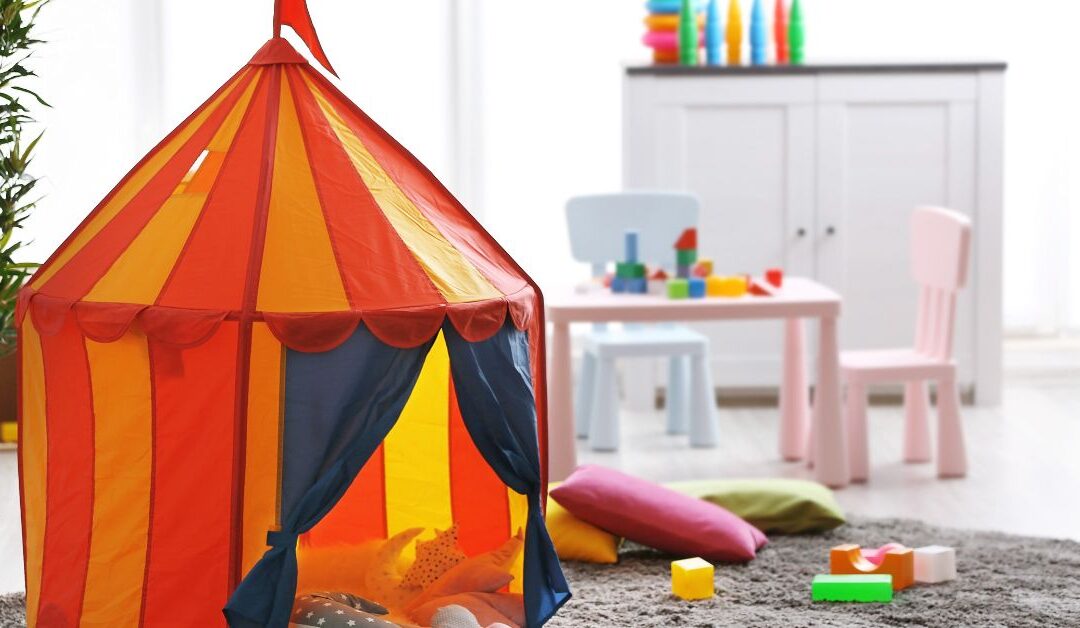What if your child’s bedroom could be more than just a place to sleep? Imagine a space that encourages creativity, supports learning, and still feels cozy enough for restful nights.
That was exactly the goal for Samantha, a mom of two who wanted to redesign her children’s shared room into a multi-use environment—one that could seamlessly transition between sleep, play, and study without constant clutter or chaos.
This case study takes you behind the scenes of that transformation and reveals how the right mix of furniture, educational toys, and smart décor can completely redefine a child’s room—proving you don’t need a huge budget to make a big impact.
The Challenge: Too Many Toys, Not Enough Space
When Samantha first reached out, her main frustration was space—or the lack of it.
Her kids’ room had become a tangle of stuffed animals, puzzles, building blocks, and school supplies scattered across every surface. There was no clear boundary between sleep, play, and study time.
“The room looked like a toy store exploded,” Samantha laughed. “We needed function and calm—but also fun. I wanted a space that felt creative, not chaotic.”
The challenge: create a multifunctional kids’ room that worked for both day and night, encouraged learning and imagination, and still looked stylish enough to grow with her children.
The Plan: Divide the Room into Three Functional Zones
The key was zoning — designing distinct yet fluid areas for sleep, play, and study within one room.
Zone 1: The Sleep Sanctuary
The first step was creating a calming sleep space. Samantha chose soft lighting, breathable bedding & room décor, and a neutral color palette with pops of pastel.
To minimize distractions, all active toys were moved to separate storage bins under the bed and inside a furniture & storage unit with labeled drawers.
Pro Tip:
Opt for multi-purpose furniture—like a loft bed with a built-in desk or drawers—to maximize floor space without compromising comfort.
Zone 2: The Play Corner
Next came the heart of the room—the play zone. This area was designed to inspire imagination while keeping cleanup easy.
Using a combination of pretend play & role play toys and building & construction toys, Samantha created a rotation system. Each week, the kids could choose a new “theme” for the play zone—one week might be “Space Builders,” the next “Animal Explorers.”
For younger kids, sensory items like baby & toddler toys and colorful puzzles made the space engaging without overstimulation.
“The biggest win was organization,” Samantha shared. “We added soft baskets for stuffed animals, a mini shelf for puzzles & games, and a bin labeled ‘Build Zone’ for blocks and magnetic tiles.”
Design Tip:
Tie the play area together with a themed rug or wall decals that match your child’s favorite colors or interests—it adds personality and structure.
Zone 3: The Study Station
As Samantha’s eldest started school, it became clear that study space was just as important as play.
A compact desk setup with adjustable lighting and ergonomic seating encouraged focus during homework time. A corkboard and a small bookshelf displayed books & learning materials, while a tidy caddy held school supplies & stationery for quick access.
To maintain a calm learning environment, this area was positioned near natural light—away from the main play zone.
Pro Tip:
Keep only current school materials on display and store extra supplies in labeled drawers or clear containers to prevent clutter buildup.
The Smart Decor Choices
The secret to Samantha’s success wasn’t just organization—it was intentional design.
Here’s what she used to bring everything together:
- Soft lighting: Warm bulbs and fairy lights for cozy evenings.
- Neutral wall tones: Creams and pastels to make the space feel larger and calmer.
- Functional décor: Storage ottomans, foldable play mats, and decorative baskets doubled as design features.
- Personal touches: Framed artwork and name decals to make the space uniquely theirs.
And yes—even her toddler’s corner got a comfort upgrade with plush fabrics and soft textures. For those moments when play turns to nap time, cozy outfits like the Cartoon Flannel Baby Rompers (available at Baby to Kids Store) kept her little one snug and happy.
The Results: A Room That Grows With Them
After the makeover, Samantha’s kids’ room became a place they actually wanted to spend time in.
The sleep zone felt peaceful and organized, the play zone stayed manageable thanks to labeled bins, and the study area encouraged responsibility and focus.
“They now know where everything belongs,” Samantha said. “It’s easier for them to transition between play and study, and bedtime is smoother because the room isn’t overstimulating.”
The transformation didn’t just improve the look of the room—it improved the rhythm of their day.
How You Can Create the Same Transformation
Ready to design your own multi-use kids’ room? Here’s a simplified checklist to guide your process:
- Assess the Space: Identify where natural light falls and divide areas accordingly.
- Define Each Zone: Assign one section for sleep, one for play, and one for study.
- Invest in Storage: Use bins, baskets, and under-bed organizers from your furniture & storage collection.
- Mix Function with Fun: Choose décor that complements your child’s interests without overcrowding the room.
- Rotate Toys: Keep the space fresh by rotating educational toys, pretend play, and building toys every few weeks.
- Add Comfort: Include cozy apparel like the Cartoon Flannel Baby Rompers for relaxed downtime.
A well-designed kids’ room does more than look beautiful—it supports healthy routines, sparks creativity, and grows with your child.
If you’re inspired by Samantha’s transformation, explore our curated collections of Furniture & Storage, Educational Toys, Bedding & Room Décor, and Baby & Toddler Clothing at Baby to Kids Store.
For more real-life makeovers, parenting insights, and decor ideas, join our newsletter or share this story with friends who love creative home design for kids.

